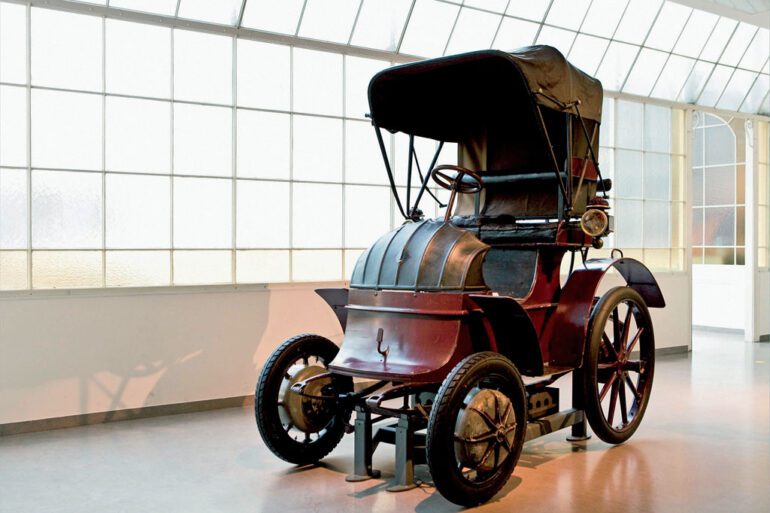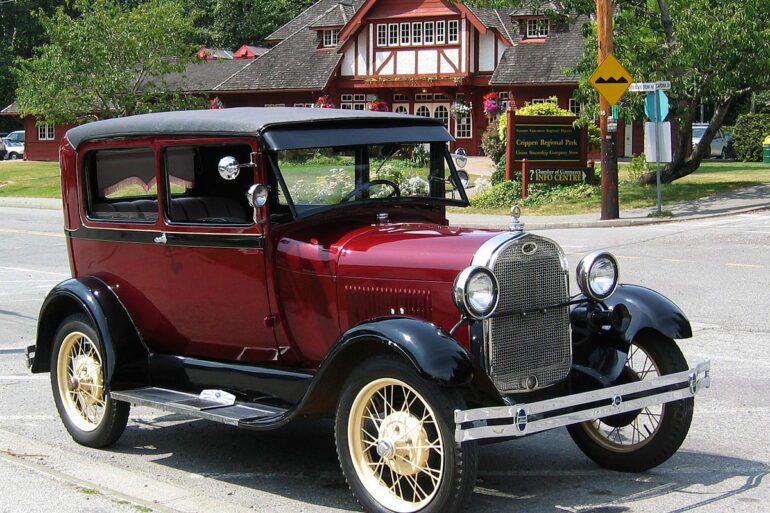Forgotten Supercars Of The 2010s
Updated September 2023 by Eduardo Zepeda

Although some of these supercars were just concepts, we reflect on their impact on the industry
About Our Selections
The automotive industry witnessed progress, aerodynamic breakthroughs, and a relentless pursuit of speed during the 2010s. While brands like McLaren, Bugatti, and Koenigsegg often dominate conversations around supercars of that era, a treasure trove of high-performance marvels has somewhat slipped from the limelight—the forgotten supercars of the 2010s.
From concept cars to mass-produced models, these exceptional machines were born during a period of evolution in the world. They showcased mind-blowing power, futuristic designs, and cutting-edge features. Join us on a journey as we rediscover these heroes and applaud the legends from an extraordinary decade in automotive history.
2017 Porsche 919 Street
A street-legal Le Mans winner
Why We Picked It:
It's called the Porsche 919 Street, and although it's a 1:1 clay model, it was a concept for a street-legal version of the 24 Hours of Le Mans champion.
As in that 911 GT1, this 919 street car has a bodywork that is inevitably reminiscent of the LMP1 model of the World Endurance Championship, such as its short nose, its forward cockpit, and its extended rear end topped with a very similar spoiler and a small shark fin.
However, these Elements and body lines appear less extreme and more modern than in the racing model, where function trumps form.
While the 919 Street's carbon-fiber monocoque and body are toned down, the powertrain is a pure race car with the 2-liter turbocharged V4 and KERS energy recovery system. However, this iteration makes 900 hp compared to 1,000 hp from the race car.
Specifications:
Price: N/A
Engine: 2.0L Turbocharged V4
Power: 900 hp
Torque: N/A lb-ft
Transmission: 7-Speed Sequential
Curb Weight: N/A
Highlights:
The Porsche 919 Street concept was designed for a street-legal version of the 24 Hours of Le Mans champion.
The hybrid powertrain for the Porsche 919 Street comes straight from the race car, which consists of the 2-liter turbocharged V4 and KERS energy recovery system, making 900 hp.
Learn More:
2013 Jaguar XKR-S GT
The feline track predator
Why We Picked It:
This unique GT version of the Jaguar XKR-S includes many chassis and aerodynamic changes that boost performance and the car's overall appearance.
The combination of the redesigned front apron, the aerodynamic appendages, and the lightweight carbon fiber rear spoiler generates 319 pounds of downforce. A 5.0-liter V8 engine producing 550 horsepower and 501 lb-ft of torque is housed under the hood and mated to a six-speed automated transmission.
The 0-60 mph time for the Jaguar XKR-S GT is less than 4 seconds, with a top speed of 186 mph. Jaguar equipped the front and rear axles with carbon-ceramic disc brakes measuring 398 and 380 millimeters, respectively, and six- and four-piston monobloc calipers.
The interior maintains the XKR-S's class and distinction while adding a sportier feel with features like bucket seats and extensive use of Alcantara or red stitching.
Specifications:
Price: $75,000-$100,000
Engine: 5.0L Supercharged V8
Power: 550 hp
Torque: 501 lb-ft
Transmission: 7-Speed Automatic
Curb Weight: 3,865 lbs
Highlights:
The XKR-S GT features many track-inspired modifications, such as a wider track, stiffer suspension, and larger brakes. The engine was hand-built by Jaguar's Special Vehicle Operations division, with a limited production of just 50 cars.
The suspension is made from lightweight materials and is adjustable for track or road use. The brakes are carbon-ceramic discs that provide excellent stopping power.
Learn More:
2010 Audi Quattro Concept
The most Audi car ever
Why We Picked It:
Audi showcased its latest version of quattro permanent all-wheel drive in the Audi quattro concept, a thoroughbred driving machine built to commemorate the quattro's 30th anniversary.
The Audi quattro concept is a muscular, small, and potent automobile. The demonstration car shares DNA with the refined Audi A5 and RS 5 Coupés but has a more assertive and outgoing design.
Audi has a rich history with gasoline engines that feature five cylinders and deliver high performance. The advanced engine in the quattro concept draws even more performance from its cutting-edge five-cylinder base. Due to numerous adjustments, the engine now produces 408 horsepower and 354.03 pound-feet of torque available at 1600 rpm through 5,200.
The Audi quattro concept goes from 0-60 mph in 3.9 seconds and has a top speed of 155 mph.
Specifications:
Price: N/A
Engine: 2.5L Turbocharged Inline-Five
Power: 408 hp
Torque: 354 lb-ft
Transmission: 6-Speed Manual
Curb Weight: 2,868 lbs
Highlights:
The Audi quattro concept was designed to celebrate the 30th anniversary of the original Audi quattro.
The Audi quattro concept was a striking car with a futuristic design. It featured a sloping roofline, a wide stance, and large air intakes. The interior was equally impressive, with a minimalist design and luxurious materials.
Learn More:
2014 Kia Stinger GT4
Power, poise and performance
Why We Picked It:
The 2014 Kia GT4 Stinger was designed by the same designers from a Californian studio who created the Kia Track'ster Concept. Kia describes the GT4 stinger as the brand's most aggressive concept car ever and a true enthusiast's machine.
The design team's primary goals for the GT4 stinger were efficiency, practicality, and excitement behind the wheel. The idea eschews the flashy features of a grand touring car in favor of a more primal connection to the vehicle.
GT4 Stinger is a two-seater coupe for which KIA chose a 2.0-liter turbocharged gasoline four-cylinder engine that generates 320 horsepower. The output is transmitted via a six-speed manual gearbox to the rear wheels fitted with 15-inch Brembo Gran Turismo brakes.
The seats are bucket-type, and a minimalist and clean environment was chosen, alternating dark and medium tones with metal inserts.
Specifications:
Price: N/A
Engine: 2.0 Turbocharged Inline-Four
Power: 320 hp
Torque: N/A
Transmission: 6-Speed Manual
Curb Weight: 2,824 lbs
Highlights:
The GT4's weight distribution is spread nearly perfectly, at 52% upfront and 48% at the rear.
The GT4 Stinger also features a quick-ratio steering rack that provides direct feedback and promised uncompromised control.
Learn More:
2013 Peugeot Onyx
A functional yet unrealistic concept
Why We Picked It:
This vehicle was more than a concept because it combines today's futuristic styling and materials with the surprise of a fully functional engine.
Peugeot chose the 3.7-liter turbodiesel V8 from the 908 Le Mans car of 2011 to power the Onyx; this engine produces 550 horsepower; however, the hybrid system adds 80 horsepower.
The Onyx has 545 horsepower for every tonne, although it weighs only 1,100 kilograms. The Onyx is an elite company since only the Bugatti Veyron Super Sport has a higher power-to-weight ratio.
The 12-piece carbon-fiber chassis contributes to the low curb weight by offsetting the unique, heavier copper body panels. Although the Onyx is a thrilling car, it wasn't particularly realistic. Still, it was the correct type of idea because it drives and looks great.
Specifications:
Price: N/A
Engine: 3.7L Turbocharged V8
Power: 550 hp
Torque: N/A
Transmission: 5-Speed Sequential
Curb Weight: 2,400 lbs
Highlights:
Peugeot's advanced design studio created this concept. They are responsible for designing the company's most futuristic concepts.
The Onyx was the first Peugeot concept car with a hybrid powertrain.
Learn More:
2010 Lexus LFA
The best-sounding supercar flop
Why We Picked It:
The Lexus LFA is a supercar with one of any mass-produced vehicle's most impressive exhaust notes. Its purpose-built 4.8-liter V10, naturally aspirated produces 553 horsepower and 354 pound-feet of torque, with 90% of its peak torque available at 3,700 rpm.
It goes from 0 to 60mph in 3.6 seconds and achieves a top speed of 202 mph. Power is sent to the rear wheels through a 6-speed sequential.
However, the car's performance and prestige came at a steep price for the manufacturer. As a supercar, the LFA could have been a better seller.
Launching at around $375,000, its price was exorbitant and still insufficient to recoup the vehicle company's enormous research and development expenses. The LFA's value has doubled since it was first released, and it is now considered a legend among car fans.
Specifications:
Price: $600,000-$1,000,000
Engine: 4.8L V10
Power: 553 hp
Torque: 354 lb-ft
Transmission: 6-Speed Sequential
Curb Weight: 3,570 lbs
Highlights:
The Lexus LFA had a limited production run from 2010 to 2012; only 500 were made.
The LFA's transmission, called ASG, Lexus uses an electrohydraulic system that shifts in 200ms
Learn More:
2013 Aston Martin Vantage S
The last old-school V12
Why We Picked It:
The AM28 engine in the V12 Vantage S generates 563 horsepower and 457 pound-feet of torque. There is 51 lb-ft greater torque available at 1000 rpm than the V12 Vantage. The seven-speed Sportshift III automatic manual transmission that powers the rear wheels allows the Vantage S to go from zero to sixty miles per hour in 3.7 seconds.
The V12 Vantage S's 573 PS Aston Martin 6.0-liter V12 engine with state-of-the-art Bosch engine management allows it to reach up to 205 mph. As a result of the AM28's greater power, Aston Martin upgraded the cooling and engine performance with better airflow management.
The radiator benefits from a carbon fiber front grille, mesh aperture, and air ducts, allowing optimal airflow. Before air is released through the carbon fiber bonnet louvers, it can cool the engine to its maximum potential.
Specifications:
Price: $90,000$110,000
Engine: 6.0L V12
Power: 563 hp
Torque: 457 lb-ft
Transmission: 7-Speed Manual / 7-Speed Automatic
Curb Weight: 3,671 lbs
Highlights:
The Aston Martin Vantage S was a unique bet since it was the last V12 model with a manual transmission, making it a proper old-school supercar.
The car has a 51% to 49% weight distribution, an anti-roll bar, double wishbones with coil springs, and an adaptive damping system from front to back.
Learn More:
2019 Bentley EXP100 GT
Bentley's vision of the future
Why We Picked It:
On its centenary in 2019, Bentley introduced the Bentley EXP 100 GT, a premium autonomous prototype of aluminum and carbon fiber with a 700-kilometer range and an entirely electric power system.
The driverless automobile targets 2035, although Bentley says it can also be driven manually. It also has a gesture-controlled AI personal assistant. The EXP 100 GT cabin uses first-class materials and 5,000-year-old copper inlays to give passengers the most extraordinary driving experience.
The biometric seats detect occupant temperature and posture and have three modes. The electric propulsion system's battery promises future technology.
The vector distribution system managed four electric motors producing 1,106 lb-ft of torque, enabling 0 to 60 mph in 2.5 seconds and 186 mph top speed. The EXP 100 GT weighs 4,188 lbs and charges 80% of the battery in 15 minutes.
Specifications:
Price: N/A
Engine: Electric Motor
Power: 800-1,300 hp
Torque: 1,106 lb-ft
Transmission: N/A
Curb Weight: 4,188 lbs
Highlights:
The Bentley 100 EXP GT looked fantastic, featured a robust, all-electric powertrain, and offered a super-smart AI system.
The mesh grille on the Bentley EXP 100 GT is made up of 6,000 LED bulbs.
Learn More:
2013 Alfa Romeo C4
Driving pleasure for the purists
Why We Picked It:
The 4C by Alfa Romeo. The mid-engine, rear-drive sports car was undoubtedly one of 2013's most anticipated vehicles. It's Alfa's attempt at reinvention, using a low-volume, high-visibility sports vehicle to restore the company's reputation and pave the way for a slew of modern mainstream offerings.
A new cast aluminum block replaces the old cast iron one in Alfa's familiar turbocharged, direct-injection 1.8-liter four-cylinder engine, resulting in significant weight savings.
Optimized to produce 237 horsepower at its peak and a hefty 258 lb-ft of torque, it sacrifices high-end sparkle for low- and medium-end approachability. The engine is paired with a six-speed dual-clutch paddle-shift transmission from Alfa and rear-wheel drive.
The Alfa 4C's top speed is 160 mph, and it can go from zero to sixty in less than 4.5 seconds using Launch Control.
Specifications:
Price: $35,000–$65,000
Engine: 1.8L Turbocharged Inline-Four
Power: 237 hp
Torque: 258 lb-ft
Transmission: 6-Speed Automatic
Curb Weight: 1,973 lbs
Highlights:
The Alfa Romeo 4C was built with a carbon fiber body and a steel chassis, making it a very lightweight car.
The final 4C model incorporates the finest technical and industrial know-how from the Alfa Romeo and Maserati brands.
Learn More:
2011 Cadillac Ciel
The opulent concept that will never see the light
Why We Picked It:
Unveiled at the 2011 Pebble Beach Concours d'Elegance, the Cadillac Ciel concept was a vision of opulence and innovation—this four-door convertible redefined luxury, blending timeless elegance with cutting-edge technology.
A twin-turbocharged 3.6-liter V6 engine produced 425 horsepower and 430 lb-ft of torque under the hood, along with a lithium-ion battery. It ensured excellent performance, and its all-wheel-drive system promised confident handling.
The spacious and exquisite interior featured sumptuous leather, suede, and wood finishes, while a refrigerated compartment, cashmere blankets, and aromatherapy elevated the in-car experience.
But the pièce de résistance was the retractable fabric roof, allowing occupants to bask in the open air. Rear-hinged rear doors added an extra touch of elegance.
The low-volume vehicle, priced in the neighborhood of $100,000, didn't have enough appeal in the eyes of GM's executives to warrant the expenditure, so they killed the project.
Specifications:
Price: N/A
Engine: 3.6L Turbocharged V6
Power: 425 hp
Torque: 430 lb-ft
Transmission: Hybrid with low-speed all-electric drive
Curb Weight: 5,071 lbs
Highlights:
The styling of the Ciel blends strong retro themes with Cadillac's current "Art and Science" design language.
When the engine is turned on, a power-assisted shifter goes into action
















